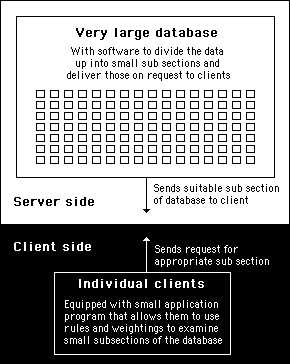
Chapter 12
Enhancing the human brain
Human and computer combinations
Common sense tells us that such an automated system of computer matchmaking would have a limited amount of success. There would be many other factors that would need to be taken into account besides those included in the questionnaire. Even if it were possible to incorporate an extensive questionnaire with thousands of questions, the system would still be reliant upon the rules and the weightings – which have no logical basis and certainly wouldn't be universally applicable.
The situation could be greatly improved if humans are introduced into this system of matchmaking to assist in processing their own results. For example, if clients were able to choose their own rules and provide their own weightings, they could arrange for the system to select potential partners that were more specifically matched to their unique, individual requirements. Using the principle of Holland's genetic algorithms, they could then try out different combinations of rules and weightings to see which delivered the best results. This would undoubtedly give better accuracy than a universal set of rules and weightings that applied to all.
For a conventional Web site, the problem with this arrangement would be in dealing with the complexity of having thousands of clients effectively running their own programs on the same computer system. This would require sophisticated Web side programming and hardware, and would be a nightmare to organise and control.
The alternative would be to give everyone their own copy of the database, and provide them with the necessary software to run the selection process on their own computers. In this way, everyone would be free to create any rules they like and play around with the weightings to see which combinations gives them the best results in their search for a suitable partner.
On first thoughts, this might seem totally unrealistic. If there were very many people involved, transferring a copy of the complete database to every single person over the Internet would be impossible. However, it could be practical if some form of preselection were made on the server side: reducing everyone's choice to a chosen sub section of the full database that included only the candidates most likely to be of interested to them. By reducing the number of choices each person would have to consider, the size and sophistication of the client side database could be drastically reduced.

Figure 12.9
If a large server side data base is sub divided into small sections, appropriate sections can be sent to clients for them carry out their own custom processing
Perhaps the reader might see the connection here between these sub sections of a database and the meeting places in the people space described in the previous chapter. The meeting places are effectively sub sections of the total data base that group together people who are most likely to be of interest to each other. This saves the client having to consider every single person in the database.
Having only a few people to deal with at a time, the data processing facilities needed on the client side can be relatively uncomplicated. Such a database could then be incorporated into a small client side application – something like the virtual cafe – that will help the client make final selections.